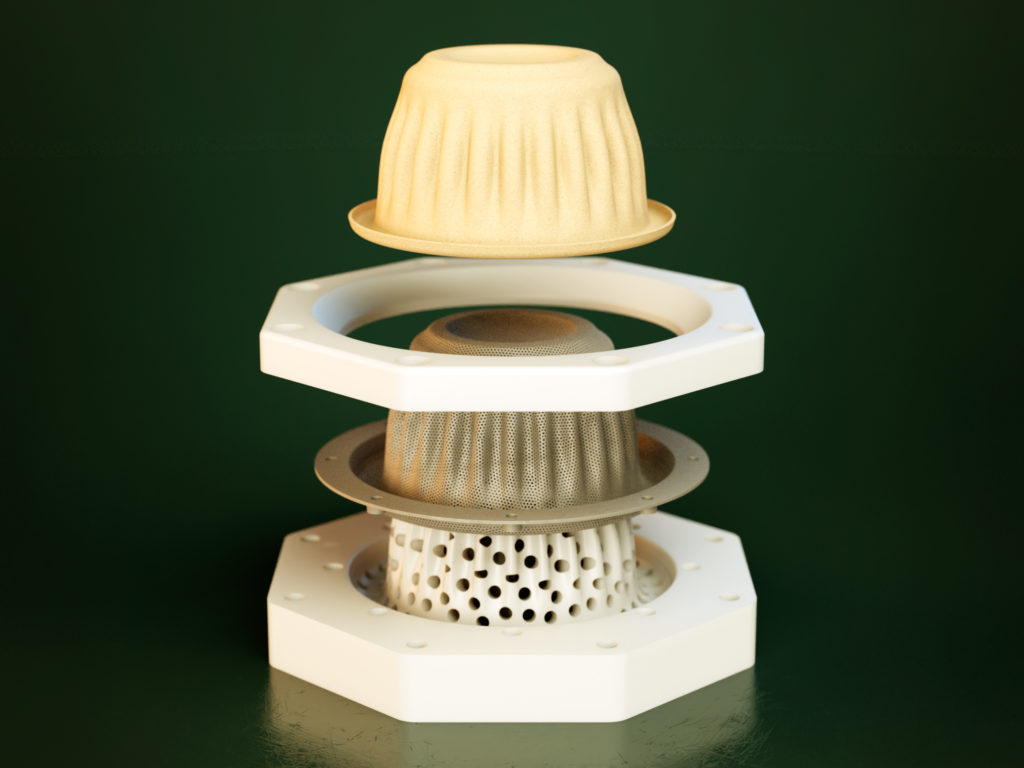2021 is really shaping up to be the year of the application, capitalization, and consolidation. Many companies are being bought to facilitate market entry by new players. We are also seeing more money flow into our industry than never before through the stock market and VCs. Meanwhile, existing players are developing more application-focused solutions. We have application-focused startups such as HoloAM which focuses on copper heatsinks, Domin which is focused on hydraulic valves, and Additive Drives which is focused on motors. Stratasys is developing application-focused print solutions for dental, medical models and more. Across the board, we’re specializing and focusing on developing complete applications to serve markets better and grow faster.
One of my favorite is molded fiber tooling. I love it because I had no idea it even existed before people started 3D printing it. Also, once we look deeper at it, we can see that it has real value for customers, their end customers and the market as a whole. This could very well be a portend to major new directions for many of us. HP has commercialized a molded fiber tooling proposition using MJF while the Swedish service bureau AIM Sweden also commercialized one using Arcam EBM more recently.
Molded fiber tooling is a series of metal mesh molds that are put side by side on a rack and, through several steps, pulp is passed through and molded. Egg cartons have traditionally been made this way, but, more recently many more applications and better finishes have started to be explored. From coffee tray drinks trays, salad bowls, food packaging and many more areas, molded fiber is exploding. A renewed environmental consciousness means that burger companies can no longer offer styrofoam clamshells or single use plastics.

Many governments are also banning single use plastics in some way or another. Consciousness about company identity is also growing, so businesses want more individualized and interesting packaging, as well. There are many new food startups and food delivery is growing quickly. As of late, Amazon and other internet boxes have boomed. With increasing environmental consciousness present in consumers and governments, these trends are set to be amplified. Enter 3D printed fiber mold tooling that can quickly make short-run tools to better make environmentally-friendly packaging of all kinds.
One of the advantages is, if a screen is damaged, the machine can be left to run and the screen can be swapped out. It is also easier to design, make, and use new tools which can lead to lead-time reductions. AIM Sweden has developed a tool using a polymer 3D printed insert and another metal mold tool made with Arcam EBM. AIM Sweden’s FreeFlow system is notable because it stacks parts inside the Arcam machines and can get away with using comparatively little in the way of post finishing, which makes the part cost effective.

The company explains their proposition as follows:
“[P]orous molding tools are submerged into a slurry of water and cellulose fiber. A vacuum is applied to the tools to drain water through the tool and collect fibers on the tool surface. In following forming and pressing steps further shaping, compression and drying take place under heat and pressure to form the final product.
“[C]onventional tooling require significant manual operations and workmanship skills as they are made manually by attaching a wire mesh to a 3D-shaped metal base. This process is time consuming, expensive and offers no opportunity to optimize the draining properties differently in different areas of the tool. In operation these types of tools often clog and brake which causes frequent and expensive production down time to clean or replace broken tools.
Optimization of draining properties for reduced cycle times and improved product quality
Cost-efficient and fast production of tooling
No clogging issues prevents expensive down-time
Long life expectancy
Quick replacement of tooling if needed
Compatible with conventional metal backings’
So, there is a boatload of additional advantages here. Through “optimizing the draining properties of the tool”, clogging is reduced as well as breakages this leads to better throughput and cycle times while reducing costs.

Above, we can see AIM Sweden’s metal and polymer combined solution. We interviewed AIM Sweden’s Chief Commercial Officer Stefan Thundal, who explained that the company now has made hundreds of these tools and expects to make many more. Applications such as plates, salad bowls, and coffee cups are growing especially quickly for them. He explains that conventional meshes cannot be optimized for flow and that, by 3D printing the tools, they can customize and optimize draining characteristics which can affect throughput and quality.
I think that this is an incredibly good case for 3D printing. There will be so many more uses possible in flow and mesh types of applications and filtering, which could be growing quickly and could benefit from time-to-market and optimized geometries that can be obtained through 3D printing. By going deeper into processes and operations, both HP and AIM Sweden have brought to market a really excellent 3D printing case that could be very beneficial to them and their customers. There must be many thousands of cases such as this in many industrial processes that we can exploit and improve.
HP really tackled this case and made its technology work for an industry and customer group that would have never thought of this. Meanwhile, AIM Sweden is not waiting for customers to come to it but is proactively commercializing new technologies and applications. Love everything about this.
Subscribe to Our Email Newsletter
Stay up-to-date on all the latest news from the 3D printing industry and receive information and offers from third party vendors.
You May Also Like
IperionX Inks 10-Year Deal with Wisconsin Manufacturer for 80 Metric Tons of Titanium Per Year
IperionX, the Charlotte-based supplier of sustainable titanium powders used for additive manufacturing (AM) and metal injection molding (MIM), has signed a ten-year deal with United Stars, a group of industrial...
America Makes Announces IMPACT 2.0: $6.6M in New 3D Printing Funding
America Makes, the Manufacturing Innovation Institute (MII) based in Youngstown, Ohio, has announced IMPACT (Improvement in Manufacturing Productivity via Additive Capabilities and Techno-Economic Analysis) 2.0, a project call which will...
Latest Earnings Overview for Australian 3D Printing Firms Titomic and AML3D
Australian 3D printing manufacturing firms Titomic (ASX: TTT) and AML3D (ASX: AL3) reported their financial results for the period from July to December 2023, marking the first half of their...
AML3D’s Ohio Expansion: Capital Infusion and Defense Contracts to Boost U.S. 3D Printing Operations
Australia-headquartered AML3D (ASX: AL3) is making headway into the United States market with strategic expansion plans and a fresh capital infusion. The company, specializing in advanced wire arc additive manufacturing...
































